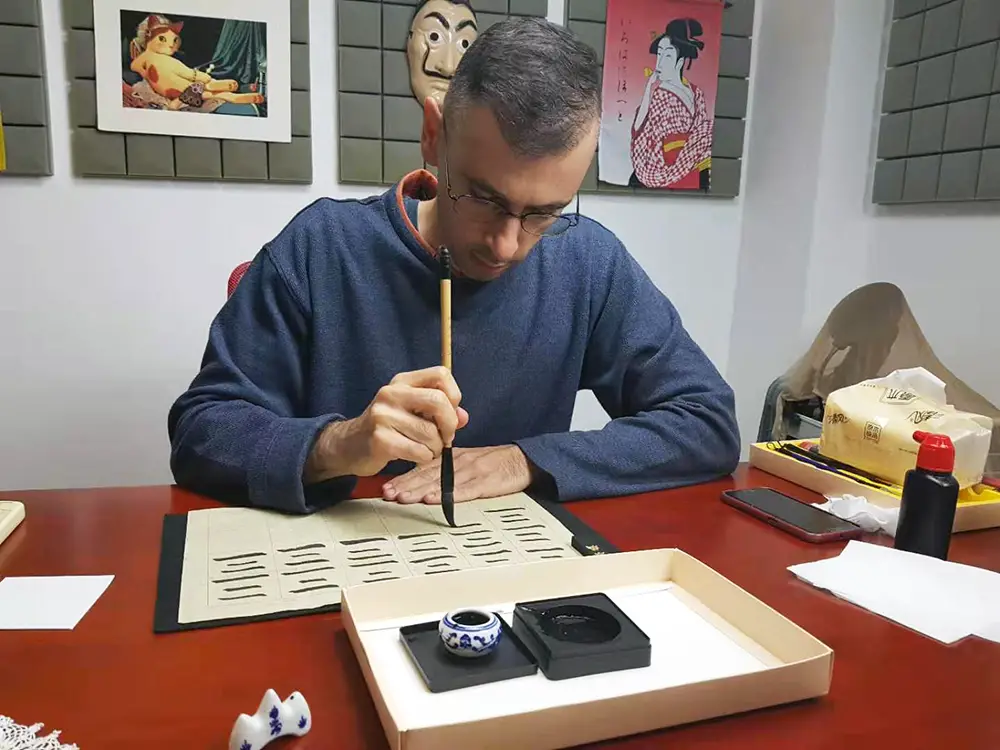Alongside painting, poetry, sculpture, music, dance, and opera, Chinese Calligraphy, known in Chinese as shūfǎ 书法, is a full-member of the family of Chinese arts. Chinese Calligraphy is considered the quintessence of Chinese culture and, over several thousands of years, writing Chinese characters has become a special high-level form of art.
Chinese Calligraphy is so ingrained in the psyche of the Chinese people that it can be found everywhere in China. Although it’s an art form that takes decades to master, Chinese Calligraphy is closely linked to the people’s daily lives. It can be found on the streets of any Chinese city, visible on signboards, shopping centers, and advertising displays, but also in people’s homes, where Chinese Calligraphy art decorate the walls of every room, including the front door.
Actually, many public institutions and newspapers have their names and logos written in Chinese calligraphy by famous artists and men of letters. Magazines and books also have their titles written in special styles of calligraphy, giving the front cover an appealing look. The six characters in the People’s Bank of China appearing on Chinese banknotes was written by Dong Biwu, a famous Chinese statesman and calligrapher.
Chinese calligraphy art is usually done on Xuan paper which is a kind of paper specific to China that is very good at absorbing ink. Once the characters have been painted on the paper, the work is then subsequently pasted on a thick paper with a silk edge and then mounted on a scroll. The calligraphy work can contain one or several characters, a poem, couplets, or a motto. Because of it’s length and silky frame, a calligraphic scroll can make a great decoration on an empty wall, bringing a certain Asian vitality in the room where it’s displayed.
Some calligraphic couplets are produced and displayed for special occasions, especially during the Spring Festival or the Chinese New Year, China’s most important traditional festival. These festive works of calligraphy are usually written on red paper and posted on gateposts, doors, walls, or columns of the house. The characters express good wishes for the coming new year.
Chinese calligraphy is also visible on folded fans, but these are mostly used as decorations and displays rather than to fan yourself on a hot day. These fans make for great gifts and are also popular souvenirs with foreign tourist visiting China. In Panjiayuan Market, also known as Beijing Antique Market, you can actually see the calligraphy artists paint the characters on the fan before you make your purchase.
Sources:
Chen Tingyou, Chinese Calligraphy. The Art of Handwriting (China Intercontinental press, 2010)
Ouyang Zhongshi, Chinese Calligraphy. Elementary 1 (Sino-Culture Press, 2013)

